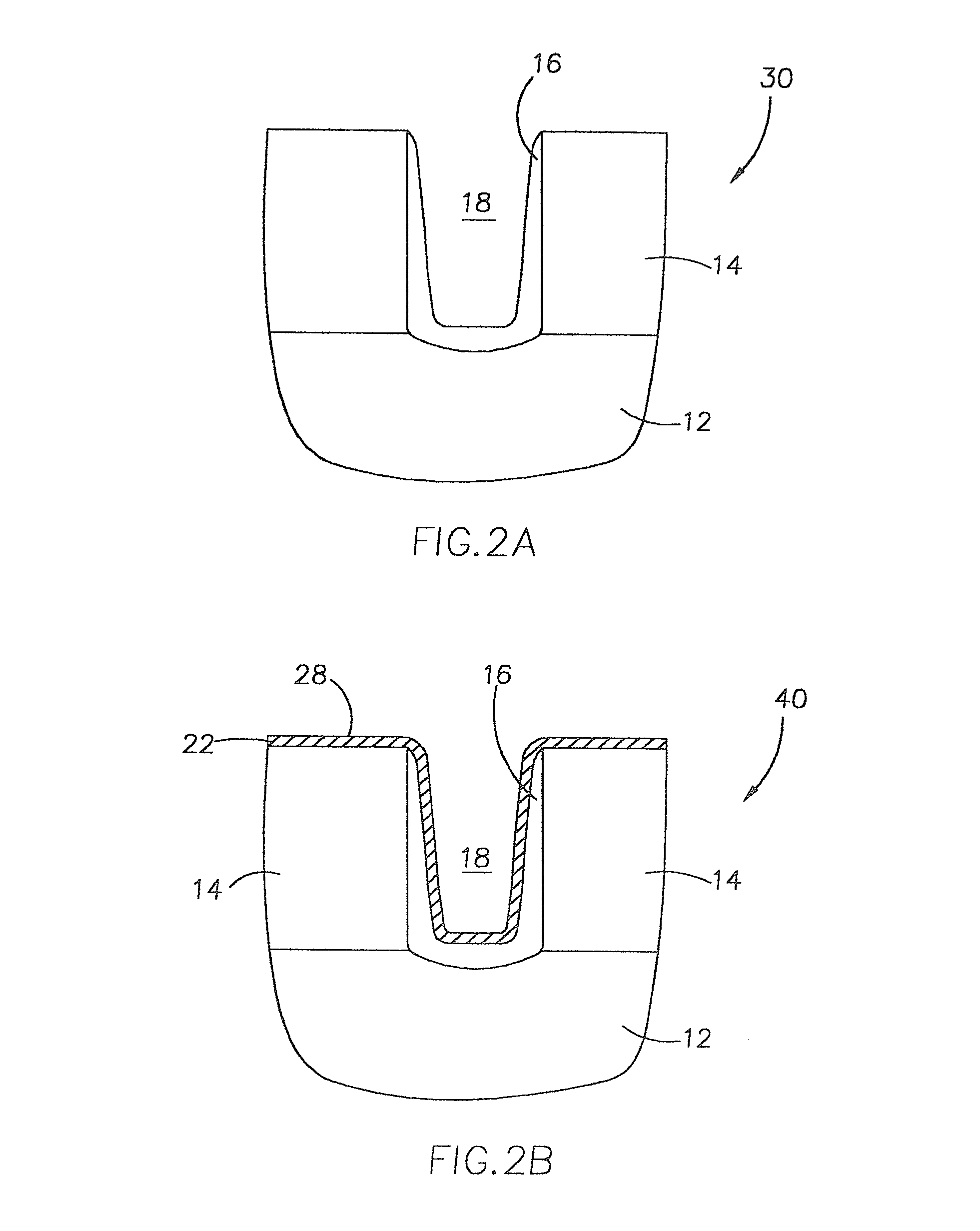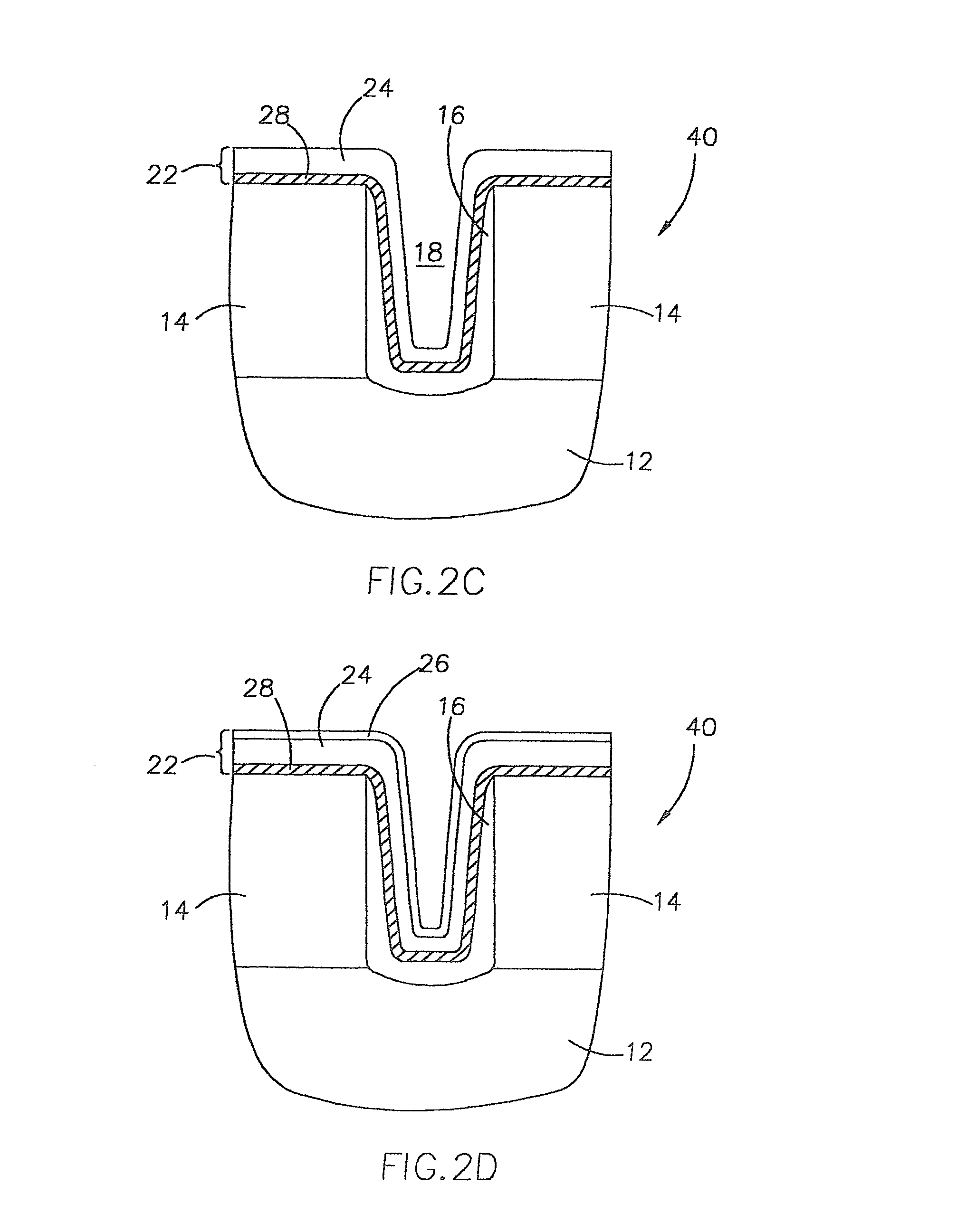Ultra thin TCS (SiCl4) cell nitride for DRAM capacitor with DCS (SiH2Cl2) interface seeding layer
a dram capacitor and dcs technology, applied in the direction of coatings, transistors, basic electric elements, etc., can solve the problems of poor electrical quality of the high temperature nitridated layer, low thickness, and extremely slow growth of the nitride, so as to improve the cp-leakage performance and achieve the same electrical performance. , the effect of saving the thermal budget for other processes
- Summary
- Abstract
- Description
- Claims
- Application Information
AI Technical Summary
Benefits of technology
Problems solved by technology
Method used
Image
Examples
example
[0061]DCS nitride and TCS nitride were deposited, alone and in combination, on a BPSG substrate to compare the measured thicknesses of the nitride layer and Cp-leakage performance.
[0062]There was a 10-minute NH3 pre-anneal before the DCS seeding layer deposition. The time period of the NH3 pre-anneal included a ramp-up time from 300° C. to 800° C. The DCS and TCS nitride depositions were at about 640° C. with pressure of 0.15 Torr and 0.2 Torr, respectively. After the cell nitride deposition, all wafers went through a standard wet re-oxidation (750° C., 105 Å target on Si blank test wafer).
[0063]The experimental details and results are shown below in Table 1 and depicted in FIGS. 4A-4F and FIG. 5. The results show that the deposition of a silicon nitride layer utilizing a DCS nitride seeding layer for TCS nitride offers the same electrical performance as a TCS nitride layer, and solves the “bubbling” problem of deposition of TCS nitride on BPSG in DRAM devices.
[0064]
TABLE 1AmountNit...
PUM
| Property | Measurement | Unit |
|---|---|---|
| thickness | aaaaa | aaaaa |
| thickness | aaaaa | aaaaa |
| thickness | aaaaa | aaaaa |
Abstract
Description
Claims
Application Information
 Login to View More
Login to View More - R&D
- Intellectual Property
- Life Sciences
- Materials
- Tech Scout
- Unparalleled Data Quality
- Higher Quality Content
- 60% Fewer Hallucinations
Browse by: Latest US Patents, China's latest patents, Technical Efficacy Thesaurus, Application Domain, Technology Topic, Popular Technical Reports.
© 2025 PatSnap. All rights reserved.Legal|Privacy policy|Modern Slavery Act Transparency Statement|Sitemap|About US| Contact US: help@patsnap.com



